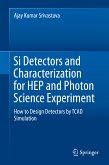To cope with the new running conditions in the ALICE experiment at the Large Hadron Collider at CERN, a new integrated circuit named SAMPA has been created that can process 32 analogue channels, convert them to digital, perform filtering and compression, and transmit the data on high speed links to the data acquisition system.
The main purpose of this work is to specify, design, test and verify the digital signal processing part of the SAMPA device to accommodate the requirements of the detectors involved. Innovative solutions have been employed to reduce the bandwidth required by the detectors, as well as adaptations to ease data handling later in the processing chain.
The new SAMPA device was built to replace two existing circuits, in addition to reducing the current consumption, and doubling the amount of processing channels. About 50000 of the devices will be installed in the Time Projection Chamber and Muon Chamber detectors in the ALICE experiment.
The main purpose of this work is to specify, design, test and verify the digital signal processing part of the SAMPA device to accommodate the requirements of the detectors involved. Innovative solutions have been employed to reduce the bandwidth required by the detectors, as well as adaptations to ease data handling later in the processing chain.
The new SAMPA device was built to replace two existing circuits, in addition to reducing the current consumption, and doubling the amount of processing channels. About 50000 of the devices will be installed in the Time Projection Chamber and Muon Chamber detectors in the ALICE experiment.
Dieser Download kann aus rechtlichen Gründen nur mit Rechnungsadresse in A, B, BG, CY, CZ, D, DK, EW, E, FIN, F, GR, HR, H, IRL, I, LT, L, LR, M, NL, PL, P, R, S, SLO, SK ausgeliefert werden.
Es gelten unsere Allgemeinen Geschäftsbedingungen: www.buecher.de/agb
Impressum
www.buecher.de ist ein Internetauftritt der buecher.de internetstores GmbH
Geschäftsführung: Monica Sawhney | Roland Kölbl | Günter Hilger
Sitz der Gesellschaft: Batheyer Straße 115 - 117, 58099 Hagen
Postanschrift: Bürgermeister-Wegele-Str. 12, 86167 Augsburg
Amtsgericht Hagen HRB 13257
Steuernummer: 321/5800/1497
USt-IdNr: DE450055826









